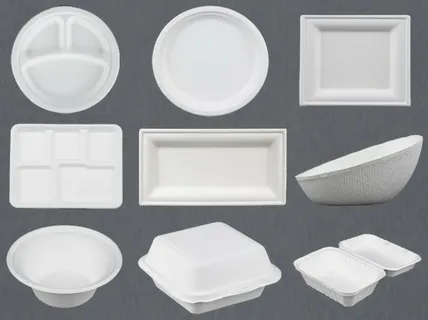Thermoformed molded fiber products have gained significant attention in recent years as sustainable alternatives to traditional packaging and disposable items. These products are crafted from renewable materials such as recycled paper, cardboard, and other plant-based fibers, making them an eco-friendly choice. Their manufacturing process involves pressing the fiber material into a mold using heat and pressure, resulting in lightweight, durable, and biodegradable items that cater to various industries, from food packaging to electronics.
Unlike conventional plastics, thermoformed molded fiber products are designed to minimize environmental impact throughout their lifecycle. Their production often relies on waste materials, reducing the need for virgin resources and promoting a closed-loop system. This aspect aligns with the principles of a circular economy, emphasizing reuse, recycling, and the responsible management of resources.
Thermoformed Molded Fiber Products and Sustainability Goals
Sustainability has become a cornerstone of modern industrial practices, and thermoformed molded fiber products play a vital role in achieving these goals. One of their primary benefits is their ability to decompose naturally, unlike plastic counterparts that persist in the environment for decades. This characteristic significantly reduces the strain on landfills and mitigates pollution, particularly in marine ecosystems where plastic waste poses severe threats.
Additionally, the energy-efficient manufacturing processes of these products further contribute to their sustainability. Compared to the energy-intensive production of plastics, thermoformed molded fiber products require less energy and emit fewer greenhouse gases. Their alignment with global sustainability targets, such as reducing carbon footprints and waste, makes them a preferred choice for environmentally conscious businesses and consumers alike.
Enhancing Resource Efficiency Through Circular Practices
The circular economy model advocates for the efficient use of resources, and thermoformed molded fiber products exemplify this approach. By utilizing recycled materials as raw inputs, these products help divert waste from landfills and reintroduce it into the production cycle. This method not only conserves natural resources but also reduces the demand for virgin materials, fostering a more sustainable supply chain.
Moreover, these products can often be recycled again after their initial use, creating a continuous loop that minimizes waste generation. Industries adopting thermoformed molded fiber products are better equipped to implement circular strategies, such as designing for disassembly and enhancing recyclability. These practices ensure that materials retain their value over time, contributing to a more resilient and sustainable economy.
Applications Across Diverse Industries
Thermoformed molded fiber products have found applications across various sectors, underscoring their versatility and ecological benefits. In the food industry, they serve as an ideal replacement for single-use plastics in items like trays, clamshells, and cup carriers. Their ability to maintain structural integrity while being environmentally friendly makes them a practical solution for foodservice providers aiming to reduce their ecological footprint.
In addition to food packaging, these products are increasingly used in electronics and consumer goods packaging. Their shock-absorbing properties and customizability make them an excellent choice for protecting delicate items during transportation. This adaptability extends to other industries, such as healthcare and retail, where sustainable packaging solutions are in high demand.
Driving Innovation in Circular Economy Practices
The adoption of thermoformed molded fiber products is driving innovation in sustainable packaging and circular economy practices. Companies are investing in research and development to improve the performance and functionality of these products, ensuring they meet the demands of modern industries while adhering to environmental standards. Innovations include coatings to enhance water and oil resistance, as well as advanced molding techniques to create intricate designs.
Furthermore, governments and organizations worldwide are recognizing the importance of such products in achieving circular economy objectives. By introducing policies and incentives that encourage the use of sustainable materials, they are paving the way for widespread adoption. This collaborative effort between industry stakeholders and policymakers is essential for transitioning to a truly circular economy, where waste is minimized, and resources are used to their fullest potential.





